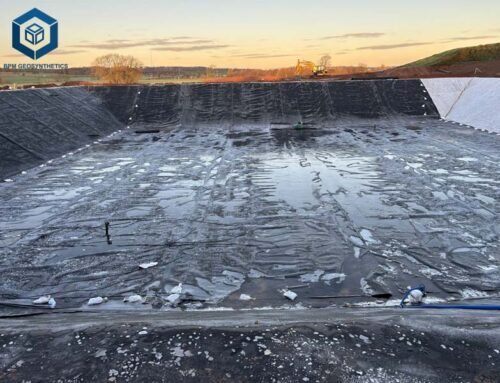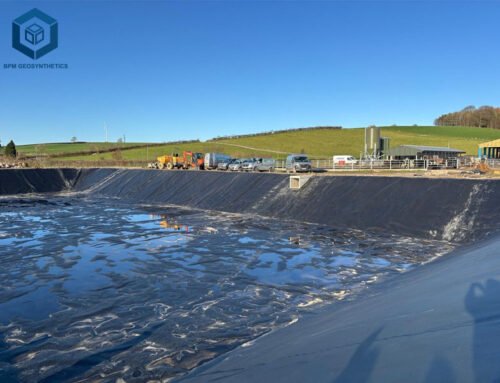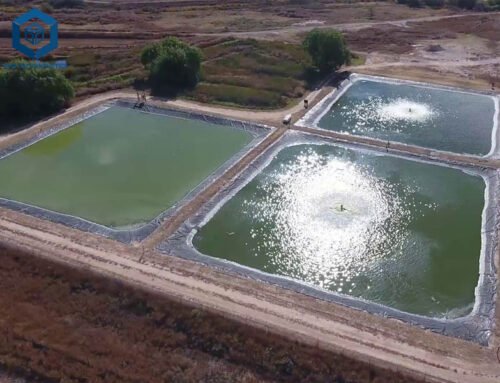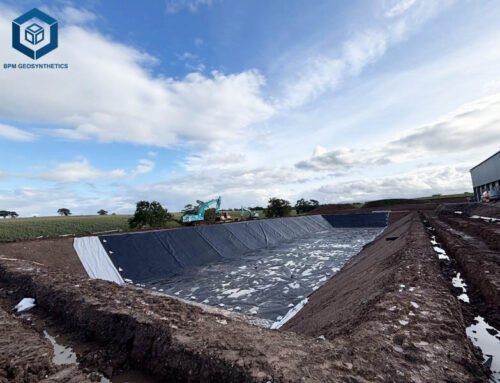High-density polyethylene (HDPE) and linear low-density polyethylene (LLDPE) geomembranes are cornerstone materials in civil and environmental engineering, widely used for containment in landfills, mining, and water management projects. While both are polyethylene-based, their distinct molecular structures result in different mechanical properties, performance characteristics, and applications. With the global geomembrane market valued at USD 2.3 billion in 2024 and projected to grow at a CAGR of 5.4% through 2030 (MarketsandMarkets, 2024), choosing the right geomembrane can reduce project costs by 20–30% and enhance durability by 15–25% (Geosynthetics Magazine). Misapplication, however, risks 10–15% higher leakage rates or premature material failure.
This blog post provides a comprehensive comparison of HDPE and LLDPE geomembranes, detailing their specifications, applications, performance parameters, and recent trends. Drawing on insights from sources like bpmgeosynthetics.com, and ASTM standards, this guide equips engineers, contractors, and project managers with actionable knowledge to select the optimal geomembrane for their projects. Whether designing a landfill or an aquaculture pond, understanding these differences ensures environmental safety and long-term performance.
1. What Is an HDPE Geomembrane?
Definition and Purpose
An HDPE geomembrane is a high-density polyethylene liner with a density of ≥0.940 g/cm³, designed as an impermeable barrier to prevent fluid or gas migration. Known for its strength and chemical resistance, HDPE is the most widely used geomembrane, accounting for 65% of the market due to its durability in harsh environments (MarketsandMarkets, 2024). With permeability rates as low as 1×10^-11 cm/s, HDPE geomembranes block 98–99% of seepage, making them ideal for primary containment (ASTM D5887).
Key Features
- Material Composition: 97.5% polyethylene, 2.5% stabilizers (e.g., carbon black) for UV and chemical resistance.
- Thickness: 0.5–3.0 mm, with 1.0–2.0 mm common for landfills (ASTM GRI-GM13).
- Tensile Strength: 27–60 MPa, with 700% elongation at break (ASTM D6693).
- Durability: Lasts 50–100 years buried, 10–20 years exposed without UV stabilizers.
- Installation: Requires thermal welding (hot-air or extrusion) for seams, achieving 85–95% strength (ASTM D6392).
Common Uses
- Landfills: Prevents 98% of leachate leakage, protecting groundwater (Geosynthetics Magazine).
- Mining Tailings: Contains 99% of toxic effluents, with textured surfaces for 30° friction angles (IMARC Group).
- Wastewater Lagoons: Blocks 99% of contaminant migration, lasting 50+ years.
- Reservoirs: Reduces seepage by 95%, enhancing water conservation (usbr.gov).
- Hazardous Waste Containment: Resists 90% of pH 2–12 exposures.
2. What Is an LLDPE Geomembrane?
Definition and Purpose
An LLDPE geomembrane is a linear low-density polyethylene liner with a density of ≤0.939 g/cm³, valued for its flexibility and ability to conform to complex surfaces. With a permeability rate similar to HDPE (1×10^-11 cm/s), LLDPE is used in applications requiring adaptability, accounting for 20% of the geomembrane market (MarketsandMarkets, 2024). Its lower density makes it less rigid, ideal for projects with uneven terrain or dynamic conditions.
Key Features
- Material Composition: 97.5% polyethylene, 2.5% stabilizers, with a less crystalline structure than HDPE.
- Thickness: 0.5–2.0 mm, with 1.0–1.5 mm common for ponds (der.wa.gov.au).
- Tensile Strength: 13–30 MPa, with 800–900% elongation at break (ASTM D6693).
- Durability: Lasts 40–80 years buried, 5–15 years exposed without UV stabilizers (ResearchGate).
- Installation: Thermal welding, with greater seam flexibility due to lower stiffness (usbr.gov).
Common Uses
- Aquaculture Ponds: Ensures 95% water retention, conforming to uneven surfaces.
- Secondary Containment: Reduces 98% of fluid migration in oilfields and chemical storage.
- Canal Linings: Minimizes seepage by 90% in irrigation systems (usbr.gov).
- Stormwater Ponds: Enhances containment by 95% in flexible applications (library.geosyntheticssociety.org).
- Landfill Covers: Adapts to settlement, reducing stress cracking by 10–15%.
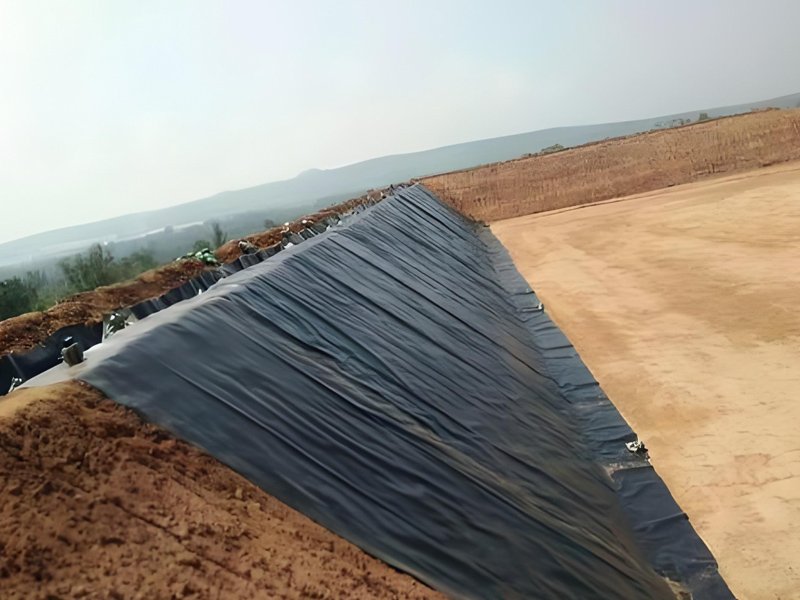
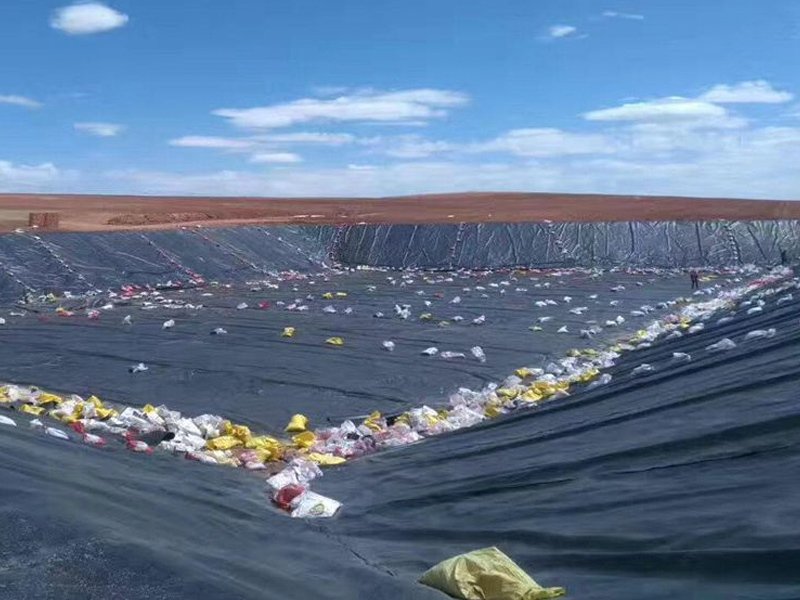
3. Key Differences Between HDPE and LLDPE Geomembrane
Material Composition and Density
- HDPE: Density ≥0.940 g/cm³, with a highly crystalline structure (50–60% crystallinity), providing rigidity and strength. Composed of 97.5% polyethylene and 2.5% stabilizers like carbon black.
- LLDPE: Density ≤0.939 g/cm³, with lower crystallinity (30–40%), resulting in greater flexibility due to short-chain branching. Similar 97.5% polyethylene composition but less dense cell structure.
Permeability
- HDPE: Impermeable (1×10^-11 cm/s), blocking 99% of fluid flow, ideal for primary containment in high-risk applications (ASTM D5887).
- LLDPE: Equally impermeable (1×10^-11 cm/s), but its flexibility makes it better suited for applications requiring surface conformity.
Mechanical Strength
- HDPE: Higher tensile strength (27–60 MPa) and puncture resistance (200–1,000 N), with 700% elongation, suited for high-stress environments (ASTM D6693, ASTM D4833). Offers 30% better resistance to mechanical damage.
- LLDPE: Lower tensile strength (13–30 MPa) but higher elongation (800–900%), allowing 20–30% greater stretch over obstructions. Less sensitive to stress cracking, reducing failure by 10–15%.
Flexibility and Conformability
- HDPE: Stiffer and less flexible, with a higher modulus of elasticity (800–1,100 MPa), making it prone to stress cracking on uneven surfaces by 5–10% (globalplasticsheeting.com).
- LLDPE: More flexible, with a lower modulus (300–500 MPa), conforming to complex terrain and reducing installation stress by 15–20%.
Chemical and Heat Resistance
- HDPE: Superior chemical resistance, withstanding 90% of pH 2–12 exposures for 50+ years, and higher heat resistance (softening at 120–130°C) (globalplasticsheeting.com).
- LLDPE: Slightly lower chemical resistance (85% for pH 2–12) and heat resistance (softens at 100–110°C), limiting use in extreme conditions (americover.com).
Durability
- HDPE: Lasts 50–100 years buried, 10–20 years exposed without UV stabilizers, with 80% strength retention after 500 hours of UV exposure (ASTM D4355).
- LLDPE: Lasts 40–80 years buried, 5–15 years exposed, with 70% strength retention after 500 hours, but better UV performance in fluctuating temperatures (ResearchGate).
Installation
- HDPE: Requires precise thermal welding (300–400°C) for seams, achieving 85–95% strength, with installation costs of $0.50–$1.50/m² (ASTM D6392). Stiffness increases labor time by 10–15% (usbr.gov).
- LLDPE: Easier to install due to flexibility, reducing labor time by 15–20% and costs to $0.40–$1.20/m². Flexible seams adapt to movement, reducing stress cracking.
Cost
- HDPE: $1.50–$2.50/m², higher due to greater strength and thickness requirements.
- LLDPE: $1.00–$2.00/m², 20–30% cheaper due to lower density and easier installation.
4. Detailed Specifications and Performance Parameters
HDPE Geomembrane Specifications
- Material: 97.5% polyethylene, 2.5% carbon black and stabilizers.
- Density: ≥0.940 g/cm³.
- Thickness: 0.5–3.0 mm, with 1.0–2.0 mm for landfills (ASTM GRI-GM13).
- Tensile Strength: 27–60 MPa (ASTM D6693).
- Elongation at Break: 700% (ASTM D6693).
- Puncture Resistance: 200–1,000 N (ASTM D4833).
- UV Resistance: 80% strength retention after 500 hours (ASTM D4355).
- Permeability: 1×10^-11 cm/s (ASTM D5887).
- Friction Angle: >30° with geotextiles (ASTM D5321).
- Certifications: ISO 9001, ISO 14001, GRI-GM13 (solmax.com).
LLDPE Geomembrane Specifications
- Material: 97.5% polyethylene, 2.5% stabilizers, with short-chain branching.
- Density: ≤0.939 g/cm³.
- Thickness: 0.5–2.0 mm, with 1.0–1.5 mm for ponds (der.wa.gov.au).
- Tensile Strength: 13–30 MPa (ASTM D6693).
- Elongation at Break: 800–900% (ASTM D6693).
- Puncture Resistance: 150–800 N (ASTM D4833).
- UV Resistance: 70% strength retention after 500 hours (ASTM D4355).
- Permeability: 1×10^-11 cm/s (ASTM D5887).
- Friction Angle: >25° with geotextiles, 5–10% lower than HDPE (ASTM D5321).
- Certifications: ISO 9001, GRI-GM17.
Performance Comparison
- Hydraulic Performance: Both achieve 99% impermeability (1×10^-11 cm/s), but HDPE’s rigidity ensures better performance in high-pressure systems (ASTM D5887).
- Mechanical Strength: HDPE offers 30% higher tensile and puncture resistance, while LLDPE’s 20–30% greater elongation reduces stress cracking.
- Friction Characteristics: HDPE provides 5–10% higher friction angles (>30°) for slope stability, while LLDPE’s flexibility improves conformity on uneven surfaces (library.geosyntheticssociety.org).
- Chemical Resistance: HDPE withstands 90% of aggressive chemicals (pH 2–12), compared to 85% for LLDPE (globalplasticsheeting.com).
- Durability: HDPE retains 80% strength after 50 years buried, versus 70% for LLDPE, but LLDPE excels in fluctuating temperatures (ResearchGate).
5. Applications: Where Each Geomembrane Excels
HDPE Geomembrane Applications
- Landfill Liners: 1.5–2.0 mm HDPE prevents 98% of leachate leakage, with high chemical resistance for municipal waste (mdpi.com).
- Mining Tailings: Textured 2.0 mm HDPE contains 99% of effluents, with 30° friction angles for slope stability (IMARC Group).
- Wastewater Lagoons: 1.0–1.5 mm HDPE blocks 99% of contaminants, lasting 50+ years.
- Reservoirs: 1.0–2.0 mm HDPE reduces seepage by 95% in high-pressure systems (usbr.gov).
- Hazardous Waste: HDPE’s 90% chemical resistance ensures safe containment (globalplasticsheeting.com).
LLDPE Geomembrane Applications
- Aquaculture Ponds: 0.75–1.5 mm LLDPE conforms to uneven surfaces, ensuring 95% water retention.
- Secondary Containment: 1.0 mm LLDPE reduces 98% of fluid migration in oilfields, adapting to settlement.
- Canal Linings: 1.0–1.5 mm LLDPE minimizes seepage by 90% in flexible irrigation systems (usbr.gov).
- Landfill Covers: 1.0 mm LLDPE accommodates subsidence, reducing stress cracking by 10–15%.
- Stormwater Ponds: 1.0 mm LLDPE enhances containment by 95% in dynamic environments (library.geosyntheticssociety.org).
Combined Applications
- Composite Landfill Liners: HDPE (1.5 mm) for primary containment and LLDPE (1.0 mm) for flexible covers reduce leakage by 99% and adapt to settlement (geosynthetic-institute.org).
- Mining: HDPE for high-stress tailings containment and LLDPE for secondary liners in uneven terrain (IMARC Group).
- Ponds: HDPE as primary liners with LLDPE as protective layers, improving conformity by 15%.
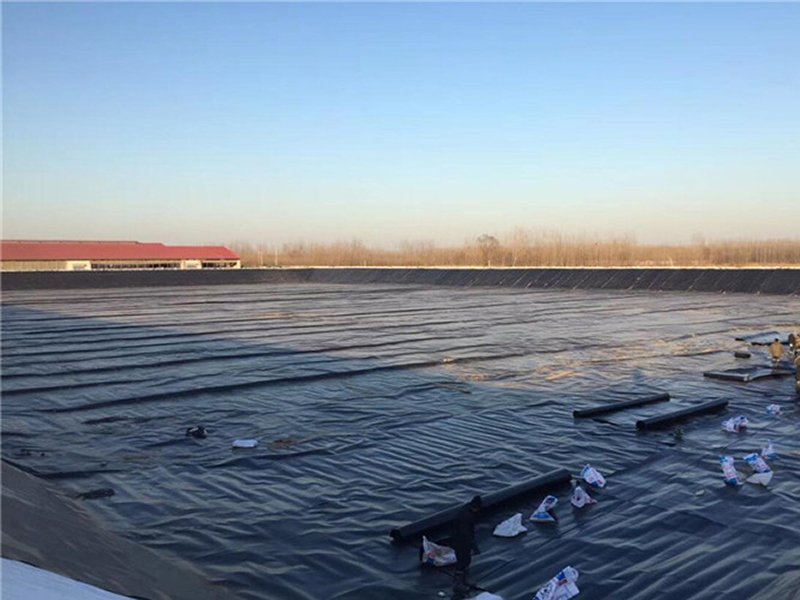
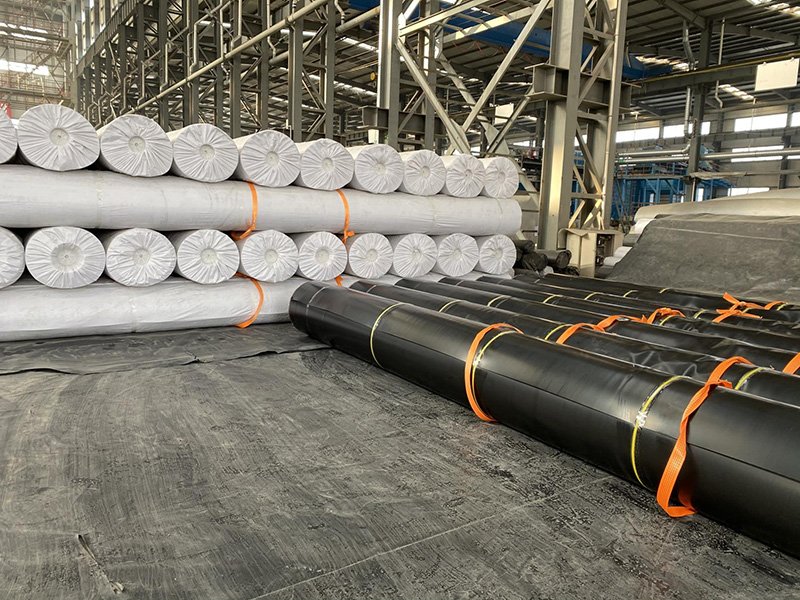
6. Recent Trends in HDPE and LLDPE Geomembranes
HDPE Geomembrane Innovations
- High-Performance Resins: The 2025 GRI-GM42 specification enhances tensile strength by 20% (60–70 MPa) and UV resistance by 10% (Geosynthetics Magazine).
- Conductive Liners: Sensors detect leaks in real-time, improving safety by 15% and gaining 10% market share in 2025 (MarketsandMarkets).
- Recycled HDPE: 10–20% recycled content reduces emissions by 12%, adopted by 25% of manufacturers in 2024 (Environmental Engineering Trends).
- Nano-Reinforcements: Carbon nanotube-enhanced HDPE increases puncture resistance by 20%, launched in 2024 (sciencedirect.com).
LLDPE Geomembrane Innovations
- Enhanced Flexibility: New LLDPE formulations improve elongation by 10–15%, reducing stress cracking in 2024 (ResearchGate).
- UV-Stabilized LLDPE: Additives extend exposed lifespans by 5–10 years, adopted by 20% of suppliers in 2024 (americover.com).
- Smart Geomembranes: Sensors monitor stress and leaks, cutting maintenance costs by 10% and gaining 5% market share in 2025 (sciencedirect.com).
- Eco-Friendly LLDPE: Recycled content (15–20%) reduces costs by 5–10%, maintaining 95% performance (Environmental Engineering Trends).
Market Trends
- Sustainability: Both HDPE and LLDPE see 10–15% adoption of recycled polymers, driven by green certifications (MarketsandMarkets).
- Infrastructure Boom: 40% of demand from Asia-Pacific projects increases prices by 3–5% (Research and Markets, 2024).
- Automation: Robotic welding systems reduce labor costs by 10%, stabilizing prices (IMARC Group).
7. Cost Comparison
- HDPE: $1.50–$2.50/m², with installation at $0.50–$1.50/m², higher due to thickness and rigidity.
- LLDPE: $1.00–$2.00/m², with installation at $0.40–$1.20/m², 20–30% cheaper due to flexibility and lower material costs.
- Combined Systems: HDPE-LLDPE composite liners cost $2.50–$4.50/m² but enhance performance, saving 20–30% on maintenance (geosynthetic-institute.org).
HDPE justifies higher costs for high-risk containment, while LLDPE offers savings for flexible applications.
8. Choosing Between HDPE and LLDPE Geomembranes
When to Choose HDPE
- Primary Containment: Landfills, mining, or hazardous waste require 99% impermeability and chemical resistance (epa.gov).
- High Mechanical Stress: HDPE’s 30% higher tensile and puncture resistance suits high-pressure systems.
- Long-Term Durability: Buried applications needing 50–100 years of service.
- Extreme Conditions: Superior heat and chemical resistance for aggressive environments (globalplasticsheeting.com).
When to Choose LLDPE
- Complex Terrain: Aquaculture ponds or canals need flexibility to conform to uneven surfaces.
- Cost Constraints: Projects with 40–80-year lifespans and lower budgets.
- Dynamic Conditions: Landfill covers or secondary containment require 20–30% greater elongation to handle settlement.
- Ease of Installation: 15–20% faster installation reduces labor costs.
Combined Use
For high-risk projects, use HDPE for primary liners and LLDPE for secondary or cover layers, achieving 99% containment and 15% better conformity (geosynthetic-institute.org).
9. Conclusion
HDPE and LLDPE geomembranes are essential for containment, with HDPE excelling in high-strength, chemically resistant applications like landfills and mining, lasting 50–100 years at $1.50–$2.50/m², and LLDPE shining in flexible, cost-effective applications like ponds and landfill covers, lasting 40–80 years at $1.00–$2.00/m². Their specifications—HDPE with 27–60 MPa tensile strength and 80% UV retention, versus LLDPE with 13–30 MPa and 800–900% elongation—dictate their roles. Innovations like conductive liners, recycled materials, and nano-reinforcements enhance performance by 10–20%, while combined systems optimize complex projects.
For engineers and contractors, selecting between HDPE and LLDPE depends on terrain, environmental conditions, and budget. Suppliers like BPM Geomembrane provides ASTM-compliant materials. By leveraging these differences and innovations, professionals can ensure cost-effective, durable solutions and beyond.


